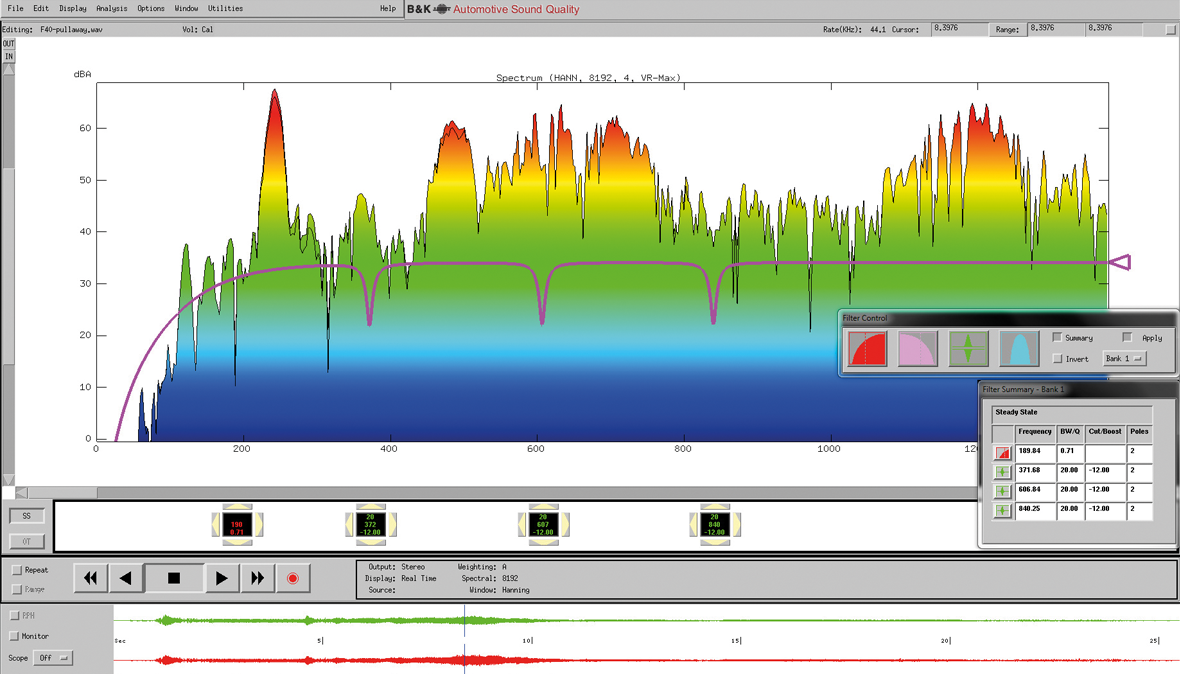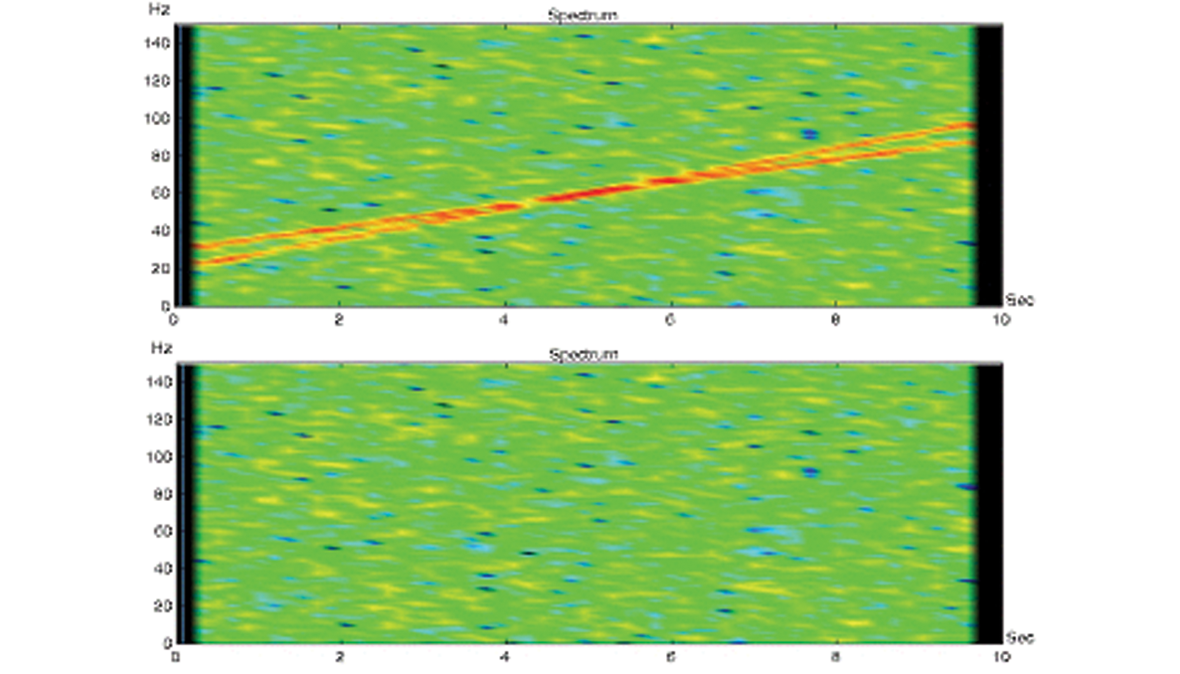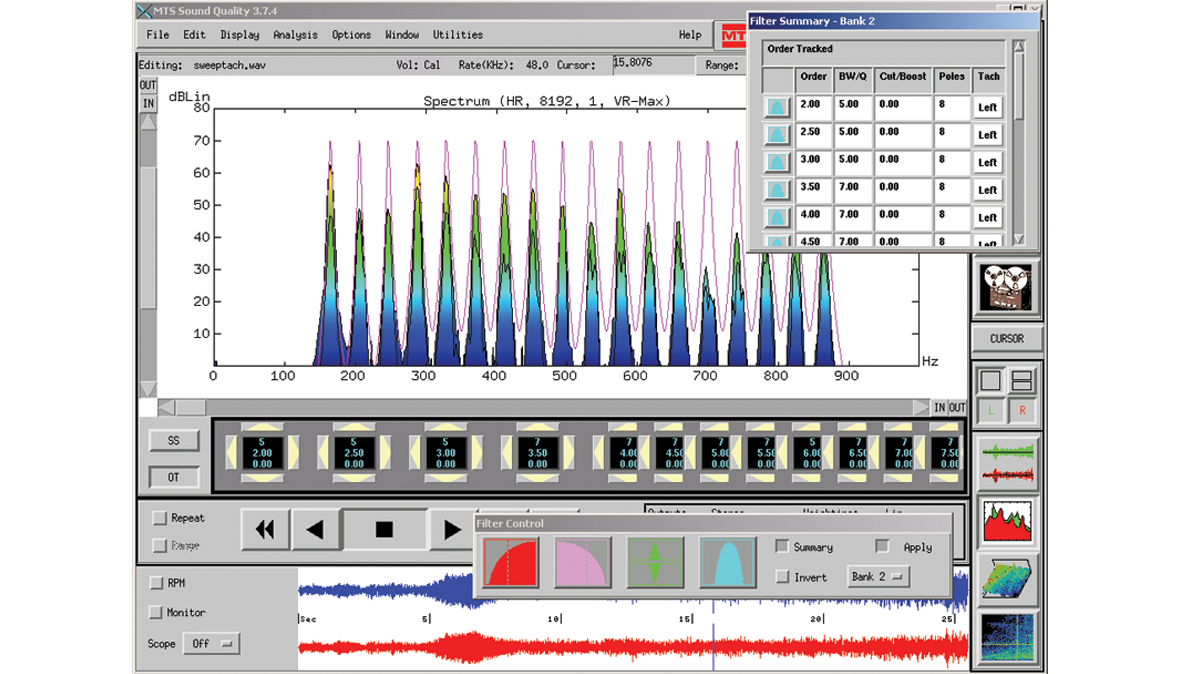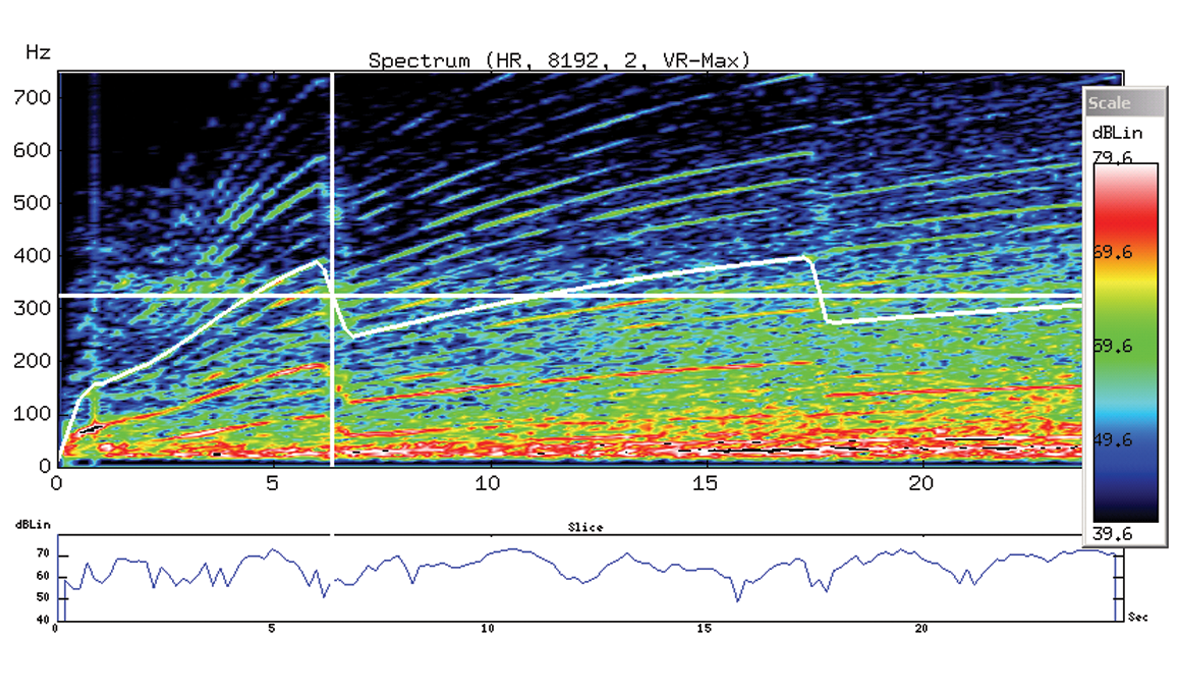Software


BZ-6047 Automotive Vehicle Sound Quality Software
This PULSE software analyses product sound quality using parameters that closely relate to the complete human experience of the sound, rather than using purely physical quantities such as sound pressure. The software can analyse real-time measurements using sound quality metrics such as ‘loudness’.
In use, you can dissect the sound using these sound quality parameters to identify its key characteristics. You can filter the sound to understand the value of potential changes and deliver targets in engineering terms. The software can also record sound and post-process the data, allowing you to isolate valid sections of the time history and to audition potential changes. This allows you to more effectively engineer products such as car doors, so they deliver good vehicle sound quality.
USE SCENARIOS
- Real-time acoustic measurements and filtering
- Recording time data for performing post-recording analysis and editing
- Benchmarking comparisons of competitor and current products
- Jury study evaluations and customer focus groups
- Speech intelligibility evaluation
- Noise annoyance investigations
- Noise troubleshooting and diagnosis
- ‘What-if’ studies on component modifications
RESULTS
You can view analysis results in terms of sound quality metrics such as ‘roughness’ or ‘sharpness’, alongside the conventional units such as sound pressure level. At the same time, the sounds can be played back while viewing their spectral content in a spectrogram display. Multispectra can be displayed as contour plots, 3D plots, slices and envelopes. All of these can be displayed simultaneously.
AUDITIONING AND SIMULATION
The software can create sounds from spectral data imported from a wide range of sources and accurately recreate it – including as binaural sound. For analysis of road noise contributions, the contributions of each wheel to the total road noise can be calculated using a multiple coherent output power (MCOP) analysis. These functions can be converted into sounds that can be mixed and compared in real time, to evaluate the contributions from each wheel individually. Other applications include synthesis of intake or exhaust orifice noise and simulation of sound deadening materials to attenuate noise transmission.
CAPABILITIES
- Tachometer signal reference gives RPM input for order tracking
- Incorporation of sound quality metric calculations into standard sound and vibration analyses
- Concurrent spectral and overall broadband analysis with metric calculations
- Correlation of subjective evaluations with objective metrics
- Transient sound events
- Real-time filtering
- Custom metrics
- Binaural and monaural sound quality
ADDITIONAL CAPABILITIES
- Vold-Kalman filtering for high-performance tracking of harmonic responses or orders, of periodic loads in mechanical and acoustical systems














